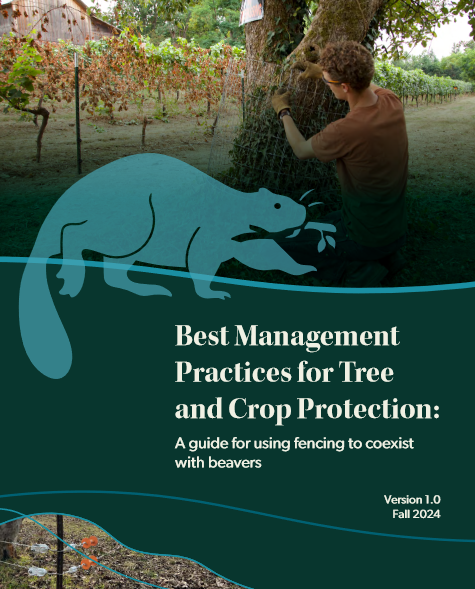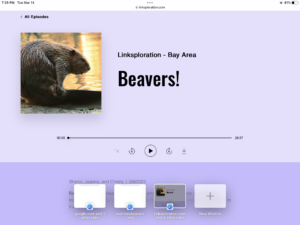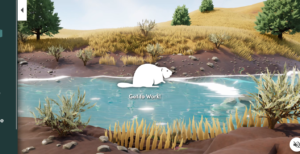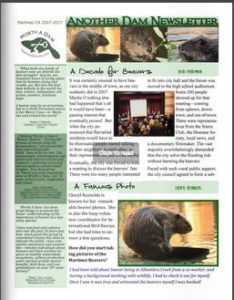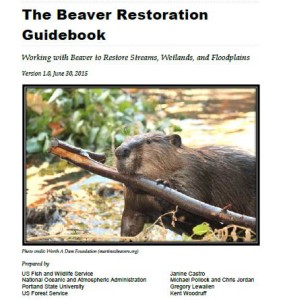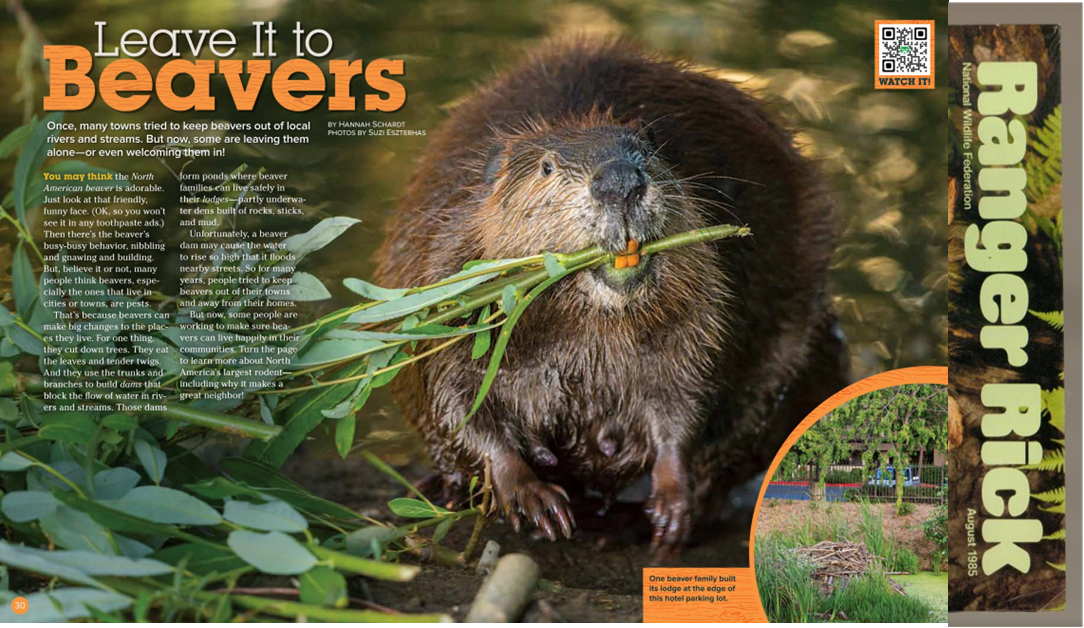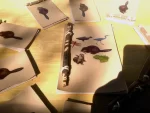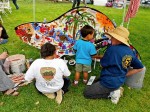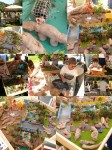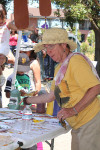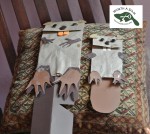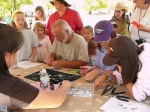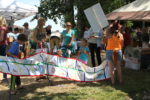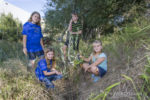This is the article that got all my attention after the holidays. And its not because I love Modesto so much. See if you can guess what caught my eye.
Beavers in Modesto? Sightings aren’t unusual, but you have to know where, when to look
Residents may not be used to seeing beavers in Modesto, but it turns out there is a long history of them in and around the area’s rivers and creeks. Jim Inman, wildlife biologist for FishBio based in Oakdale, said he sees beavers in Modesto fairly regularly, even in Dry Creek. “I’ve seen them downstream in the Grayson and Shiloh area and as upstream as La Grange,” he said.
Molly Alves, Beaver Restoration Program supervisor for the California Department of Fish and Wildlife said this definitely is a part of the state where beavers are historically native.
Molly Allves is the Beaver Restoration Program supervisor for CDFW? She has been with the Tulalip tribes forever and just last month listed herself as employed there in her presentation at the Beaver Institute.
This is WONDERFUL news because she knows more about beaver relocation than anyone except maybe Gerhard Schwab. I was worried that CDFW was modelling itself after the Utah program for moving beavers, but this is MUCH MUCH better news.
Alves, the Beaver Restoration Program supervisor, said there have been problems with beavers felling fruit or ornamental trees, and they are attracted to human infrastructure, for example “culverts” or tunnels that allow water drainage under roads. “Culverts are the biggest thing. Basically, a beaver sees a culvert and it sees a dam with a tiny hole in it, and those are easy to plug, particularly when the culverts are undersized,” she said. Hart, the Fish and Wildlife volunteer, said beavers have been known to plug up canals and flood out farmers’ lands. “Beavers are controversial because to an environmentalist and nature person, they’re a keystone species that creates an ecosystem,” he said. “But where man land-manages the rivers and waterways and agriculture, they are a nuisance species.” Hart fished a large, dead beaver from under the footbridge at Kewin Park last year. “They do get poached,” he said. “So the one I picked out might very well have been shot.” For the first time in 75 years, beavers are being relocated to other areas of the state, but it’s in small numbers for restoration of historic beaver populations like at the Tule River Indian Reservation, and only as a last resort. There are several ways to reduce the negative impact of beavers in areas that are more populated. Lundquist said her team is creating a beaver help desk to inform and provide resources on how to coexist with beavers. Wraps have been placed around some cottonwood trees in Tuolumne River Regional Park’s Gateway parcel that prevents beavers from chewing on them as they grow.
Well well well. Is Valerie Cook still the program manager? And she hired Molly after she presented her relocation data to the staff? Either way this is VERY GOOD NEWS for the beavers, because being relocated is hard work.
And they have a much better chance under Molly’s watchful eye. This deserves celebration as other than making Chuck Bonham cry at the first relocation its the very most encouraging thing I’ve heard yet about the CDFW beaver restoration program.
Welcome aboard, Molly.
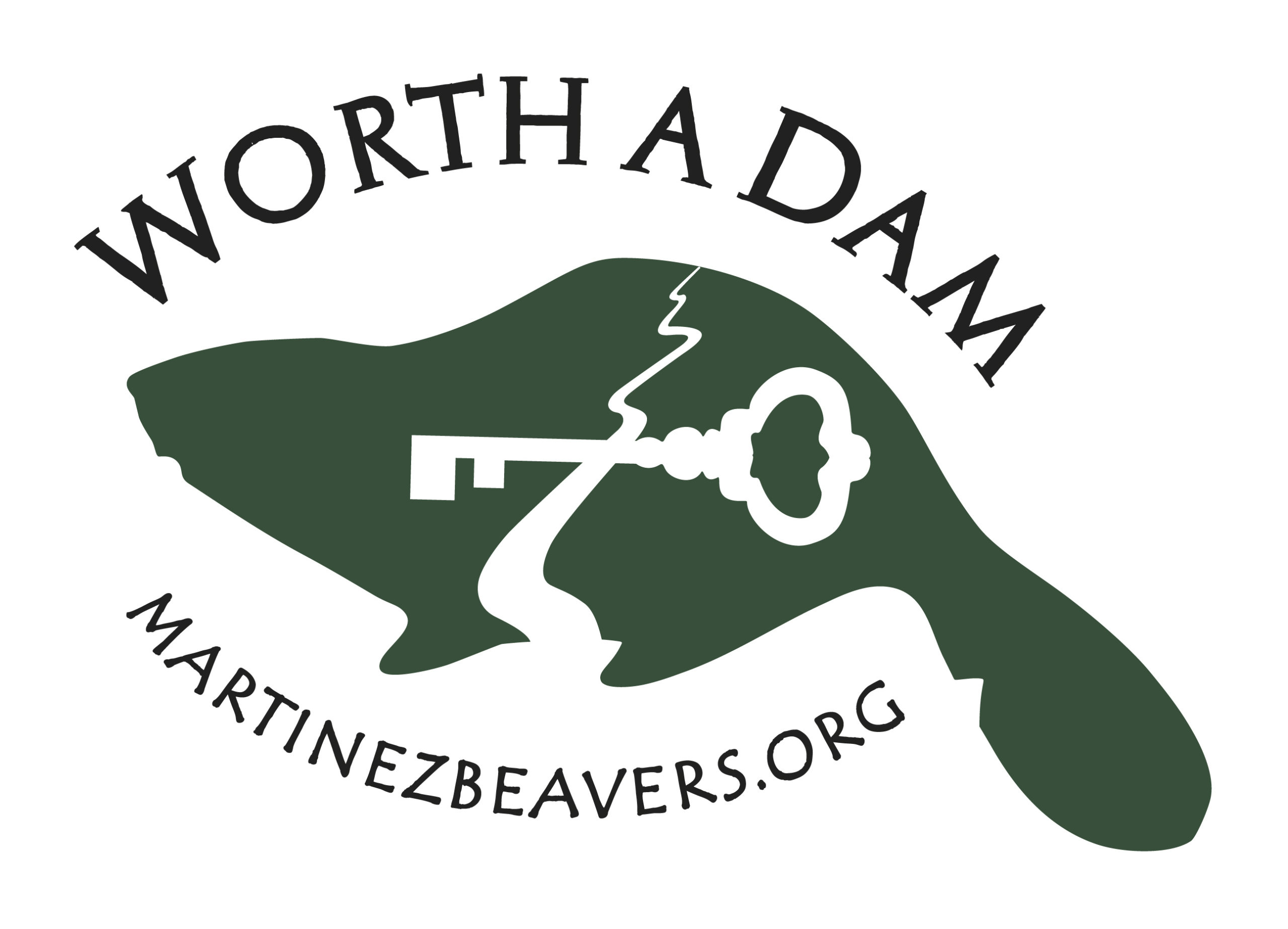

 Let’s celebrate labor day by praising the ever-working beaver shall we? Never a day off and no supervisor needed. Beavers do all the work of their own accord. Molly Alves is a name we should recognize allowing beavers to do their work. Let’s hear what she has to say today.
Let’s celebrate labor day by praising the ever-working beaver shall we? Never a day off and no supervisor needed. Beavers do all the work of their own accord. Molly Alves is a name we should recognize allowing beavers to do their work. Let’s hear what she has to say today.
 Alves helped launch the Tulalip Beaver Project in 2014 with the aim of using beavers to boost declining salmon numbers. Since the low-cost project began, scientists have relocated more than 200 “nuisance” beavers, as they are called, and created dozens of salmon-friendly beaver ponds. While scientists don’t have statistics on salmon population changes after beaver reintroductions, they say anecdotal evidence shows the rodents reshape the landscape in a way that’s fostering more fish. Now they’re set to expand their easily scalable work into new watersheds in western Washington, and other groups in the Pacific Northwest are picking up on their successful tactics too. “I’ve heard multiple people say that Washington is kind of a leader in beaver projects,” says Kodi Jo Jaspers, a Trout Unlimited employee and manager of the recently-launched Wenatchee Beaver Project on the other side of the Cascades.
Alves helped launch the Tulalip Beaver Project in 2014 with the aim of using beavers to boost declining salmon numbers. Since the low-cost project began, scientists have relocated more than 200 “nuisance” beavers, as they are called, and created dozens of salmon-friendly beaver ponds. While scientists don’t have statistics on salmon population changes after beaver reintroductions, they say anecdotal evidence shows the rodents reshape the landscape in a way that’s fostering more fish. Now they’re set to expand their easily scalable work into new watersheds in western Washington, and other groups in the Pacific Northwest are picking up on their successful tactics too. “I’ve heard multiple people say that Washington is kind of a leader in beaver projects,” says Kodi Jo Jaspers, a Trout Unlimited employee and manager of the recently-launched Wenatchee Beaver Project on the other side of the Cascades.


